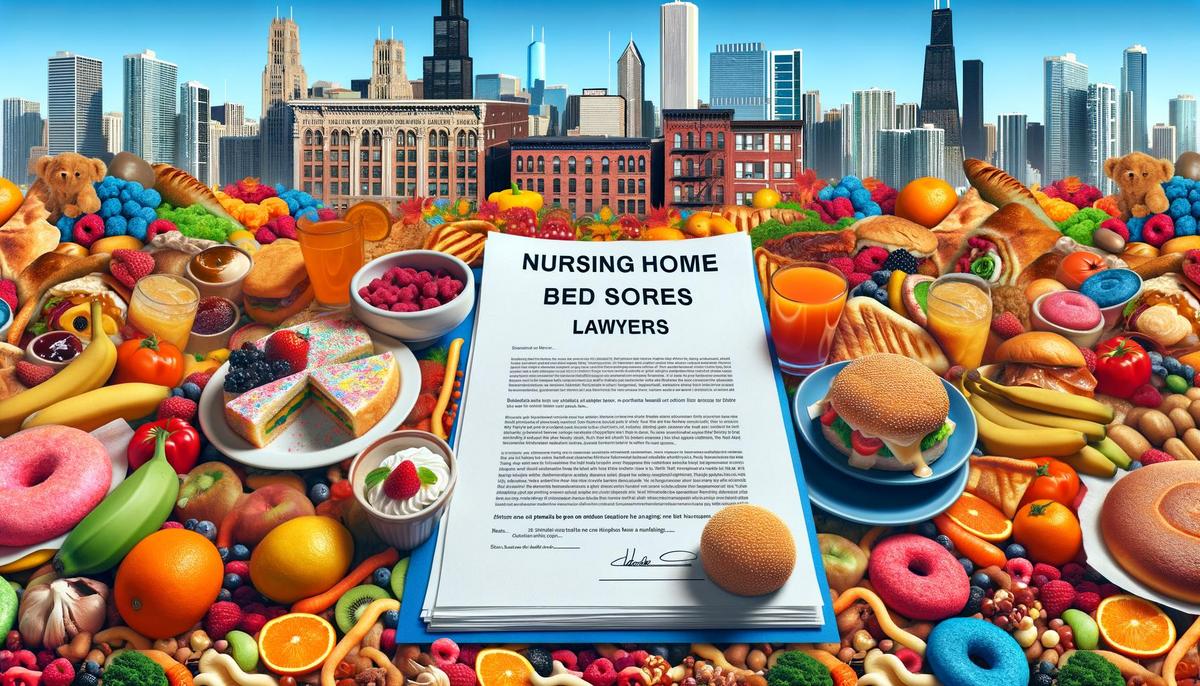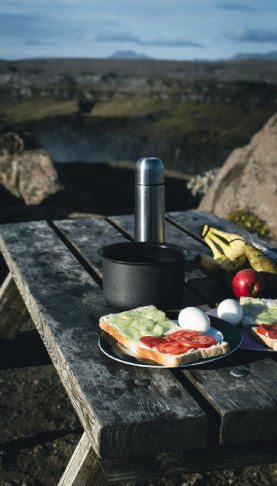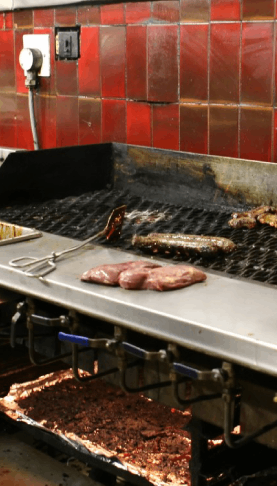If someone you love in a Chicago nursing home has a bed sore, act now. Ask for the wound stage, take dated photos, request a same-day wound care and dietitian consult, and record what they are eating and drinking at each meal. Then speak with trusted Chicago nursing home bed sores lawyers who can review the case and explain next steps: Chicago nursing home bed sores lawyers. Food plays a direct role here. Pressure injuries get worse when calories, protein, and fluids fall short. So your eye for good food and balanced plates is not just a hobby. It can help protect someone’s skin and health.
Why a food lover cares about bed sores
I like to cook. I care about flavors, textures, the feel of a good meal. In nursing homes, meals are not only about pleasure. They are clinical. Poor meals and low intake raise the risk of pressure injuries. Good meals can help them heal.
Many bed sores start with quiet signs. Dry lips. A half-eaten lunch. Thin soups with no protein. Coffee without water on the tray. Seconds matter, but so do bites.
Low intake and low hydration make skin fragile and slow healing. Watch the plate, not only the wound.
When you bring an extra soup from your favorite spot or ask about a protein snack between meals, you are not being picky. You are helping with prevention. And if the sore is already there, that food focus can become part of the legal record.
What bed sores are and how to spot them at the table
Pressure injuries come from sustained pressure, shear, and moisture. They show up on bony spots like heels, hips, tailbone, and ankles. They can be small at first. They can fool you. Nutrition and positioning both matter.
Here is a plain view of stages and why food still belongs in the same conversation.
| Stage | What you might see | What to ask staff | Food and fluid angle |
|---|---|---|---|
| Stage 1 | Red, does not blanch (stay white) when pressed, warm or cool, painful | Where is it, when first noted, what is the turning schedule | Push protein, check fluid goals, track food intake daily |
| Stage 2 | Open shallow wound, blister, tender | Wound size in cm, dressing plan, consults ordered | Add snacks, shakes, soft proteins at each meal |
| Stage 3 | Deeper crater, fat visible, drainage, odor possible | Culture taken, offloading devices, dietitian plan in chart | High-protein plan plus vitamin C and zinc per dietitian |
| Stage 4 | Muscle or bone visible, high infection risk | MD and wound specialist notes, pain control, hospital transfers | Calorie dense meals, scheduled supplements, strict hydration |
| Unstageable | Covered by slough or eschar, stage not visible yet | Debridement plan, imaging if bone infection suspected | Same as above, with close intake tracking |
| Deep tissue injury | Dark purple area, may feel boggy, can open fast | Frequent checks, pressure relief tools, escalation plan | Nutrition boost ahead of breakdown if possible |
If you only do one thing during a visit, look at the tray and the water cup. Then look at heels and tailbone. You might feel awkward asking. Ask anyway.
Photos, names of dishes, intake percentages, and times can become strong evidence. A half-eaten tray at 12:30 is a fact. Facts carry weight.
The missing link many families overlook: nutrition and hydration
Pressure injury risk climbs when the body lacks fuel. Healing needs energy, protein, and micronutrients. The plan is not fancy. It is steady.
Here is a simple cheat sheet you can use, even if you are not counting grams at home.
| Need | Practical target | Easy sources in a nursing home | Ideas to bring from home or a restaurant |
|---|---|---|---|
| Calories | Enough to stop weight loss and fuel healing | Fortified mashed potatoes, oatmeal with milk, pudding | Creamy soups, mashed avocado, custards, soft pasta |
| Protein | Often 1.2 to 1.5 g per kg body weight per day, per RD | Eggs, Greek yogurt, cottage cheese, fish, beans | Soft tofu bowls, lentil soups, meatballs, shredded chicken |
| Fluids | Goal set by the care team, watch urine color and frequency | Water, milk, tea, soups, oral rehydration drinks | Broths, decaf iced tea, fruit purees, high-fluid desserts |
| Vitamin C | Daily intake to support collagen | Strawberries, fortified juices, bell pepper in soft salads | Smoothies, citrus gelatin cups, pureed fruit |
| Zinc | Short course when ordered by the RD or MD | Fortified cereals, meats, beans | Soft chili, minced turkey with gravy, hummus |
You do not need to be perfect. If lunch was light, try to make dinner a bit heavier. Consistent wins beat heroic one-off meals.
Menu red flags you can spot in 60 seconds
- Repeated skipped meals with no snack tray later.
- Thin soups without protein on most days.
- No water refills during the meal window.
- Pureed plate that looks like one beige lump with no label.
- Cold food served to slow eaters without reheating support.
- Tray placed out of reach, no one assists, family expected to do it all.
What good dining support looks like
- Staff checks diet order and texture every meal, not just the first day.
- Assistance within minutes for anyone who needs help.
- Snacks offered between meals for light eaters.
- Hydration cart rounds in afternoon and evening.
- RD notes in chart after any weight change or new wound.
- Menu variety with at least one high-protein option each meal.
If the facility can label, offer, and document, healing odds rise. If it cannot, you need to document for them and for your lawyer.
Legal basics in Chicago you should know
I am not here to scare you. I just want you to have a simple map.
– Bed sores often signal neglect when preventable steps were skipped. Turning, offloading, skin checks, nutrition support, and hygiene are not optional.
– Illinois has a resident rights law and a nursing home care act. Staff must create and follow a care plan tailored to risk.
– Time matters. Illinois generally has a two-year time limit for injury claims. Cases can be complex, so early review helps.
What counts in a case tends to be boring paperwork plus clear photos and dates. That is where your meal notes and images of trays help.
What lawyers look for in a bed sore case
- Risk scores like the Braden scale and whether care matched the risk.
- Turning and repositioning records, pressure relief devices, heel protectors.
- Wound staging accuracy, size measurements over time, and dressing orders.
- Dietitian assessments, intake records, weight logs, and supplement orders.
- Staffing patterns during the period the wound developed or worsened.
- Communication with the family, MD orders, and any hospital transfers.
If this sounds dense, that is normal. A focused Chicago attorney can pull the records and translate them into a story a jury or insurer understands.
Step-by-step plan you can start today
- Photograph the wound and the meal tray each visit. Include a watch, phone, or newspaper for date context.
- Ask for the care plan, the diet order, and the most recent RD note. Request copies.
- Track intake. Write down what was eaten and drunk. Percentages help: 25 percent, 50 percent, all.
- Request a pressure-relief schedule in writing. Ask to see turn logs for the past week.
- Confirm whether a wound consult was ordered. Ask when the specialist will see your loved one.
- Report concerns to the nurse manager. If no response, contact the Illinois Ombudsman or IDPH.
- Call a local lawyer who handles these cases. Share your notes and photos for a quick read.
I have seen families wait, hoping it gets better. Sometimes it does. Often it does not.
How Chicago food culture can help you help them
We love our food scene here. That can be useful. Outside food can lift intake fast if the care team approves. You still need to match the diet texture to the swallowing plan.
– For pureed diets: smooth soups, silky mashed sweet potatoes, blended lentil dal, Greek yogurt, puddings.
– For soft and bite-sized: meatballs with gravy, baked salmon flaked, soft pasta with ricotta, stewed vegetables.
– For minced and moist: finely chopped chicken in broth, soft tofu mash, mashed beans with olive oil.
If your loved one is on thickened liquids, ask the speech therapist which level they are on. Bring items that match. You do not want to guess. Bring a label from the restaurant or your own note so staff know what it is.
Smart pairings from local spots
- Tomato soup with added cream and grated cheese for more calories.
- Soft polenta with braised mushrooms or shredded chicken.
- Custard or panna cotta style desserts for extra protein when made with milk.
- Hummus with extra olive oil and soft pita, cut small if needed.
- Ricotta bowls with honey and soft fruit.
One small caution from me. Watch vitamin K heavy foods if warfarin is in the picture. If there is a question, ask the nurse or RD before bringing big batches of greens.
Turning food observations into a stronger case
This part is a bit unusual, but it works. Your food notes can create a clear line between poor intake and a wound that got worse.
– Save monthly menus and daily menus if you can. Photograph them.
– Write down when supplements were offered and whether they were finished.
– Record weight trends from the chart. If weight is dropping and the wound is growing, that link matters.
– Note any time the wrong texture or wrong diet shows up. For example, tough meat on a pureed order.
When the record shows risk, and the tray shows neglect, accountability follows.
A quick look inside the chart, through a food lens
Ask the facility for these items. You can request them in writing.
| Record | Why it matters | What you want to see |
|---|---|---|
| Diet order and texture | Sets what should be on the tray | Correct texture, allergy notes, supplements listed |
| RD assessment | Flags risk, sets targets | Calories and protein plan, follow-up dates, interventions |
| Intake logs | Shows if the plan happened | Consistent data, not all 100 percent |
| Weight logs | Trends tell the story | Stability or gain during healing period |
| Wound notes | Stage, size, and change over time | Objective measurements, treatment changes |
| Turn schedules | Relieves pressure | Regular entries matching the care plan |
If any of these are missing, write that down too.
How to choose the right lawyer in Chicago for a bed sore case
Here is a simple set of questions you can ask during your first call.
- How many nursing home bed sore cases have you handled in the past few years?
- Do you review nutrition and hydration records as part of every case?
- Who will collect and read the wound and dietitian notes?
- What do you need from me in the next two weeks?
- How do you update clients, and how often?
A good lawyer does not need you to carry the case. They will welcome your photos and food notes. They will also get the records you cannot.
What a realistic case path looks like
Every case is different. Here is a common flow so you have a sense of the road.
- Intake call and photo review.
- Medical record request to the facility and hospital.
- Expert review by wound care and sometimes a dietitian.
- Demand letter to the facility or insurer with the story and evidence.
- Negotiation. If no fair result, filing a lawsuit.
- Discovery, depositions, and mediation.
- Settlement or trial.
Keep taking notes and photos during this period. Healing or lack of healing both inform value.
Costs tied to bed sores that families do not always expect
Bed sores can lead to extra care. Bills add up.
– Hospital stays for infection or surgery.
– Wound vac therapy and supplies.
– Antibiotics and lab tests.
– Specialty mattresses and cushions.
– More hours of nursing support.
– Emotional distress for the resident and the family.
Food support cannot fix everything. It can lower risk and build strength for the rest of the plan.
Prevention basics you can encourage, meal after meal
You do not run the building. You can still push on small levers.
- Ask staff to sit your loved one upright at every meal.
- Confirm the tray matches the ordered diet and texture.
- Offer sips between bites, not just at the end.
- Add protein to breakfast. Eggs, yogurt, or a soft cheese.
- Bring one favorite bite that is easy to swallow. Appetite rises with joy.
- Check heels and tailbone after the meal while they are repositioned.
I once watched a resident thrive after her daughter started bringing creamy soups from a small Ukrainian spot twice a week. Nothing magical. Just steady intake, more calories, and a care team that noticed someone was paying attention.
Common myths and what I think is closer to the truth
- Myth: Bed sores always happen no matter what. Truth: Many are preventable with pressure relief, hygiene, and proper nutrition.
- Myth: Thin people always get bed sores. Truth: Risk is about pressure, moisture, mobility, and intake. Many body types are at risk.
- Myth: Supplements fix the problem. Truth: They help only if the full plan exists and the person actually drinks them.
- Myth: Families should not bring outside food. Truth: When it matches the diet order, outside food can help. Coordinate with staff.
A meal visit checklist you can keep on your phone
- Is the tray correct for texture and allergies?
- Is there a clear protein on the tray?
- Is there water or another drink within reach?
- Is the resident upright and supported in the chair or bed?
- How much was eaten in 20 minutes? Write a percent.
- Any coughing or long chewing that suggests texture mismatch?
- Any redness on heels or tailbone after the meal? Check and document.
- Take photos of tray before and after. Note time.
What to do if the facility blames appetite alone
Sometimes staff point to appetite and stop there. That is only part of the picture.
– Ask for appetite stimulants only if the RD and MD agree the risk is worth it.
– Request smaller, richer meals. Think calorie dense, soft, and savory.
– Ask for more help with feeding. A slow eater is not a no eater.
– Request a snack schedule. Morning, afternoon, and evening.
– Ask for social dining if safe. Company helps many people eat more.
If the wound keeps growing, your record of these requests supports your claim that simple steps were not taken or were late.
How to work with the care team without starting a fight
I am direct by nature, and still, being respectful helps the resident. Try this approach.
– Start with a thank you for one thing that was done well.
– Share the concern and a photo or two from your phone.
– Ask a clear question: “Can we add eggs at breakfast and a yogurt snack at 3 pm until the wound closes?”
– Get a yes or no. If yes, ask who will write it in the plan.
– If no, ask for the reason and write that down too.
Clarity beats volume. You are building a record and a culture of attention.
For the food-curious: texture terms you might hear
You might see words on the chart. Here is a quick decoder.
| Term | What it means | What to bring | What to avoid |
|---|---|---|---|
| Pureed | Completely smooth, no lumps | Blended soups, puddings, smooth yogurt | Chunky soups, grainy mixes, seeds |
| Minced and moist | Very small, moist pieces | Fine chopped meats in gravy, mashed beans | Dry chopped meats, crusty bread |
| Soft and bite-sized | Soft pieces about 1.5 cm | Meatballs, soft pasta, baked fish | Steaks, raw crunchy veg |
| Thickened liquids | Liquid thickened to slow flow | Thickened juice, smoothies if allowed | Thin water, thin coffee unless approved |
If the order changes, ask why and ask to be told right away next time. Consistency keeps people safe and well fed.
When a bed sore ties back to staffing and systems
Food is not everything. Staffing levels, training, and leadership shape outcomes.
– If there are not enough hands, trays sit, water cups stay empty, turns are late.
– If documentation is sloppy, risk goes unseen until the wound is serious.
– If leadership tolerates shortcuts, patterns appear across residents.
A strong case connects the dots between the wound, the missed turns, the poor intake, and the lack of care plan updates.
A small story from a Sunday visit
I once sat with a resident at Sunday lunch. Roast chicken, green beans, and mashed potatoes. Looked good, but she had a soft diet order. No knife in sight. She poked the chicken twice and gave up. No one noticed. I asked the nurse for a swap. They brought meatloaf with gravy and applesauce. She finished half. The next week, the RD added a 3 pm yogurt and a protein shake at breakfast. Her wound shrank over the next month. Did the meatloaf fix it? No. Did better meals, hydration, and daily turns help? Yes. Food gave us a handle to pull on.
Bringing restaurants into the plan
If your loved one has a favorite restaurant, call ahead. Many places will prepare soft or pureed versions if you explain. I have had chefs blend a bean soup longer, or switch a salad for a soft polenta side. They were happy to help. Bring small amounts, label them, and tell staff what is in the dish.
You can also ask the facility kitchen to plate outside food safely. The staff needs to know what it is so they can match the order.
When to escalate beyond the dining room
If you see any of these, escalate to leadership and consider a legal call the same day.
- New wound or a wound that doubled in size since last week.
- Tray mismatches happen more than once.
- Weight loss of several pounds in a month without a new plan.
- No wound consult after you asked and documented the request.
- No call back from management after you raised the concern.
Keep your tone calm and your notes tight. You are not overreacting. You are advocating.
What a lawyer can do that you cannot
You can see the tray and the wound. A lawyer can pull the staffing schedules, the admin emails, and the full record set. They can hire experts who show, with detail, how the plan failed. They can push for fair payment for harm, and for changes that protect others.
You do not have to carry this alone. Share what you have seen. Share your photos. Ask hard questions.
Q and A
Q: I am bringing in outside food and tracking meals. Do I still need a lawyer if the wound seems to be healing?
A: If the wound is healing and the facility corrected the plan, you might not need a case. Keep documenting for a few weeks. If the sore returns, or if new sores appear, call a lawyer for a quick review. A short call with a local bed sores team can confirm whether the chart tells a safe story or a risky one.













